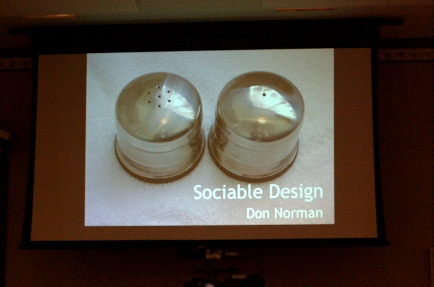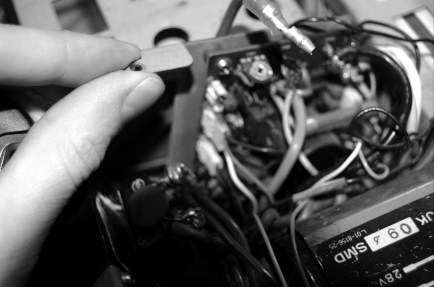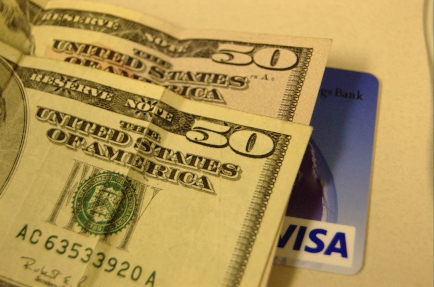
Don Norman slide
Donald Norman spoke as a part of the Design Matters lecture series at UIUC on Tuesday. Here are a few notes from his talk.
The traditional design approach creates a one-to-one mapping between user(s) and a machine or service. However, it neglects the environment. One particularly egregious example is what Norman calls “machines that moon us.” For instance, computers are designed to look good from the user standpoint. However, if the back of the computer faces the customers or a glass wall, more people can see the mess of wires behind the computer than the well-designed part.
“Social signifiers” are trails that people leave behind. For instance, if we arrive at a subway station and the platform is full of people, it is likely that we are early for the next train. On the other hand, if we arrive and the platform is vacant, it is likely that we are late. Fascinating.
Organic processes tend to be asynchronous. Therefore, waiting is unavoidable in the real world. The goal is to make the wait interesting and engaging for the user. More on this at a later date.
In other news, two interesting Design Matters lectures are on the horizon. David Goldberg of the iFoundry initiative to modernize engineering education at UIUC is speaking on 4 November. The second one is actually someone I considered suggesting to the series but dismissed as a long shot…Nokia designer/ethnographer/anthropologist Jan Chipchase, whose fascinating blog is in my blogroll, is coming on 2 December!

